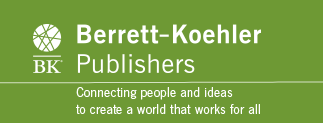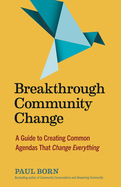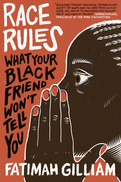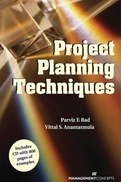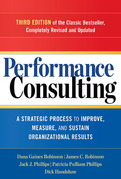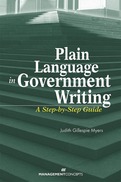Science tells us that humans are deeply wired for empathy and compassion and that our emotional selves help us make better decisions and motivate others. However, the tactics we use to train leaders bear little reflection of these advancements; we're still creating competent but emotionally distant leaders who “manage human assets” and lead by setting goals, deadlines, and deliverables.
Zina Sutch and Patrick Malone hope to flip a light switch and illuminate, above all else, that leadership begins with heart and soul. Too many training programs reduce leadership to an equation, matrix, or acronym. But leadership is a relationship. It's one human helping another. The most successful leaders show they genuinely care about their employees and are, well, fun. It's just like any relationship.
In seven succinct chapters, the authors show that people lead best when they tap into their genetically driven human nature to love and nurture, connect and trust. Leading with love and laughter offers powerful dividends: tighter teams, stronger performance, improved morale, greater trust, more creativity, and even better health. While Sutch and Malone cite the science and offer examples, tips, and practices, their larger purpose is to reintroduce the warmth of human interaction and emotion as the foundation of what leadership is all about.
Veteran community organizer Paul Born's work has contributed to lowering cancer rates in Maine, improving mental health for young people in Florida, and reducing poverty rates in Canada by 20 percent. In this much-needed new book, he shares stories of how he was able to catalyze local communities and guide them to make significant progress on seemingly intractable community problems.
Born has found that the secret to success is to organize and unite around a common agenda. This is not a list of topics, like a meeting agenda, nor a strategic plan. He offers a process for bringing leaders from businesses, human service organizations, and governments together with people who have a lived experience of a specific community problem. A common agenda is a statement of shared aspirations, a map of the assets in the community, and a road map for how to work together to make those aspirations a reality.
Part I of this book describes how to identify your community's readiness for change; form leadership, action, and strategy teams; create a common agenda; and establish plans for community engagement. Part II presents the approaches and skill sets needed to do the work described in part I.
Remarkably, enormous systemic problems such as climate change, poverty, disease, racism, housing, and many more issues can be best addressed at the local level. Communities can develop solutions tailored to their unique circumstances and can collaborate at a magnitude that can result in a truly transformative impact. This book shows how to make change happen.
2024
“Well-informed, hard-hitting advice for antiracists.” —Kirkus Reviews
What if there were a set of rules to educate people against race-based social faux pas that damage relationships, perpetuate racist stereotypes, and harm people of color? This book provides just that in an effort to slow the malignant domino effect of race-based ignorance in American communities and workplaces to help address the vestiges of our nation's racist past.
Race Rules is an innovative, practical manual for white people of the unwritten rules relating to race, explaining the unvarnished truth about racist and offensive white behaviors. It offers a unique lens from Fatimah Gilliam, a light-skinned Black woman, and is informed by the revealing things white people say when they don't realize she's Black.
Presented as a series of race rules, this book has each chapter tackling a specific topic many people of color wish white people understood. Combining history and explanations with practical advice, it goes beyond the theoretical by focusing on what's implementable.
Gilliam addresses issues such as:
- Racial blinders and misperceptions
- White privilege
- Racial stereotypes
- Everyday choices and behaviors that cause racial harm
Project Planning Techniques is a comprehensive reference for project managers in any discipline, outlining the latest proven-effective methods based on solid research. Blending practical experience with academic rigor, this authoritative resource will help you develop a deeper understanding of current knowledge and best practice techniques for project success.
With practical examples from many industries, Project Planning Techniques gives you a firm understanding of how these methods are applied in real-world situations.
• Get a solid foundation in project planning fundamentals
• Discover the latest indices and models for project selection and prioritization
• Gain an understanding of the schedule network and the project schedule
• Learn processes and techniques for monitoring expenditures during the implementation phase
• Explore the relationship between knowledge management and project management - and how you can manage project knowledge by integrating techniques from both systems
From start to finish, Project Planning Techniques will help you improve your understanding of project planning — and your performance as a project leader.
Bonus CD-ROM: Project Planning Techniques includes a bonus CD-ROM with comprehensive examples from several industries, including WBS, RBS, network diagrams, project estimates, and much more.
Performance Consulting and Measurement Toolkit - The third edition of Performance Consulting references graphic and adaptable tools that can be downloaded to support the performance consulting work the coauthors describe. These 35 tools are available to purchase and download from this product page. These Microsoft Word tools can be adapted to your specific needs and application requirements.
Performance Consulting – The Process (1 tool)
• Performance Consulting Process
Performance Consulting – The Mental Model and Logic (3 tools)
• Need Hierarchy
• Components of a Gaps Map
• Gaps Map Template for Data Input
First Phase: Identify Strategic Opportunities (8 tools)
• Organization and Industry Knowledge Assessment Tool
• Client Relationship Strategy Worksheet
• Assessment of Performance Consulting Capability
• Assessment of Your Critical Thinking Capability
• Starter List of Questions
• Reframing Discussion Template
• Checklist to Prepare for a Proactive Business Goals Conversation
• Proactive Business Goals Discussion Template
Second Phase: Assess Business and Performance Needs (11 tools)
• Prework for Star Employee Interviews
• Starter Kit of Questions to Ask Star Employees
• Tips for Managing Interviews with Star Employees
• Comparing Performance and Competency Models
• Checklist for Piloting Questionnaires
• Sources of Data and Methods for Performance Assessment
• Conversion Table for Translating Frequency Means into Percentages (PDF format)
• Categories of Root Causes (PDF format)
• Template for a Gap and CAUSE Analysis Survey
• Possible Solutions for Causes
• Solution Selection Worksheet
Third Phase: Implement and Measure Solutions (9 tools)
• Alignment and Measurement Model (PDF format)
• Data Collection Model
• Selecting the Appropriate Project for Impact and ROI Analysis
• Tips on Improving Response Rates on Surveys and Questionnaires
• ROI Analysis Plan
• Guiding Principles for ROI Analysis
• Selecting the Appropriate Method of Isolation
• To Covert or Not Convert Job Aid
• Cost Tracking Template
Fourth Phase: Report and Sustain Results (3 tools)
• Sample Agenda for a Measurement Report Meeting
• Data Reporting Best Practice List
• The Joan Kravitz Story: A Personal Account of a Briefing to Top Executives to Present an ROI Study
Whether you're in the public or private sector, good writing skills are critical to your success in the workplace. Plain Language in Government Writing: A Step-by-Step Guide shows you how to apply federal plain-language guidelines to every type of writing — from emails, memos, and letters to agency communications, technical procedures, and budget justification statements. Through numerous exercises as well as examples from a variety of federal and state agencies, this practical guide walks you step-by-step through every phase of the writing process, providing tips for improved clarity, conciseness, and completeness. This valuable reference will help you:
Write for diverse audiences in reader-friendly, plain language
Overcome writer's block
Gain confidence in your ability to write — and get results
Make your writing visually appealing
Prepare for briefings and presentations
Recognize successful writing and identify what makes it effective
A Plain-English Guide to Government Writing will enable you to express yourself more clearly and concisely, produce documents more efficiently, and work more effectively with others throughout the writing process.
